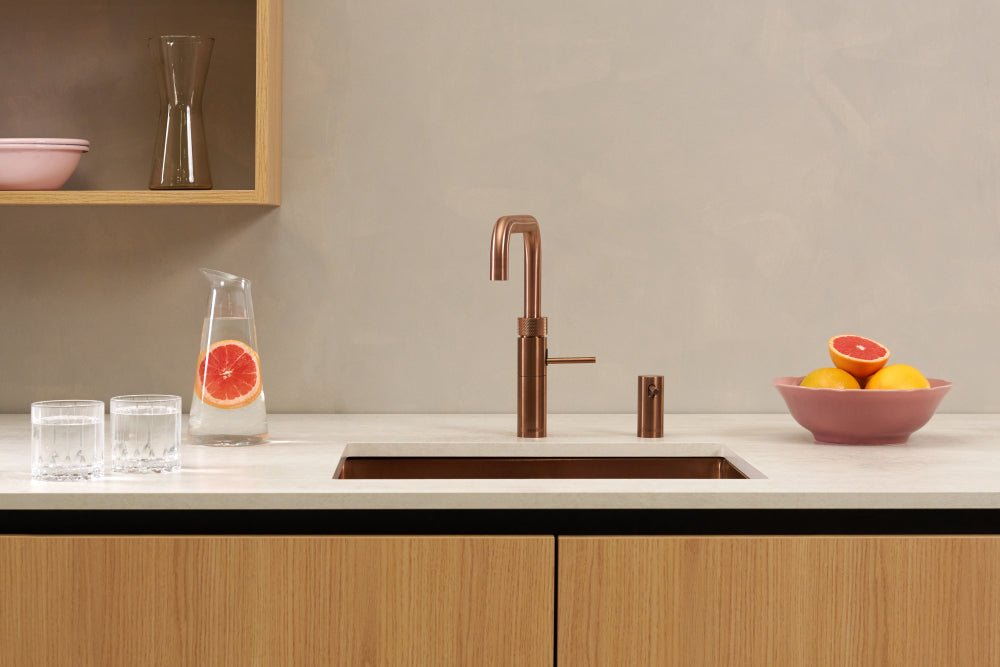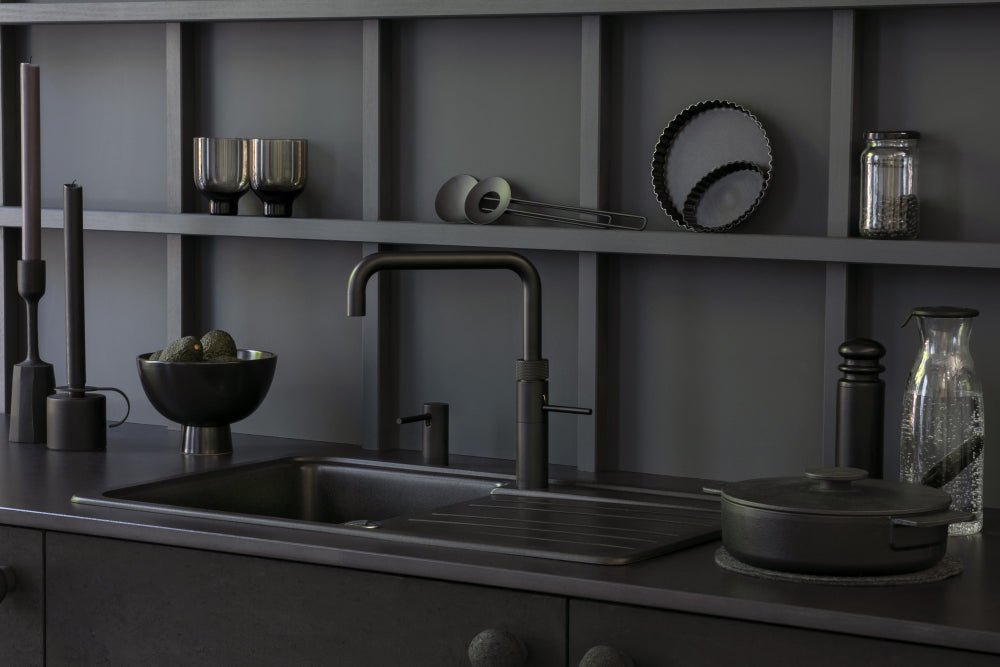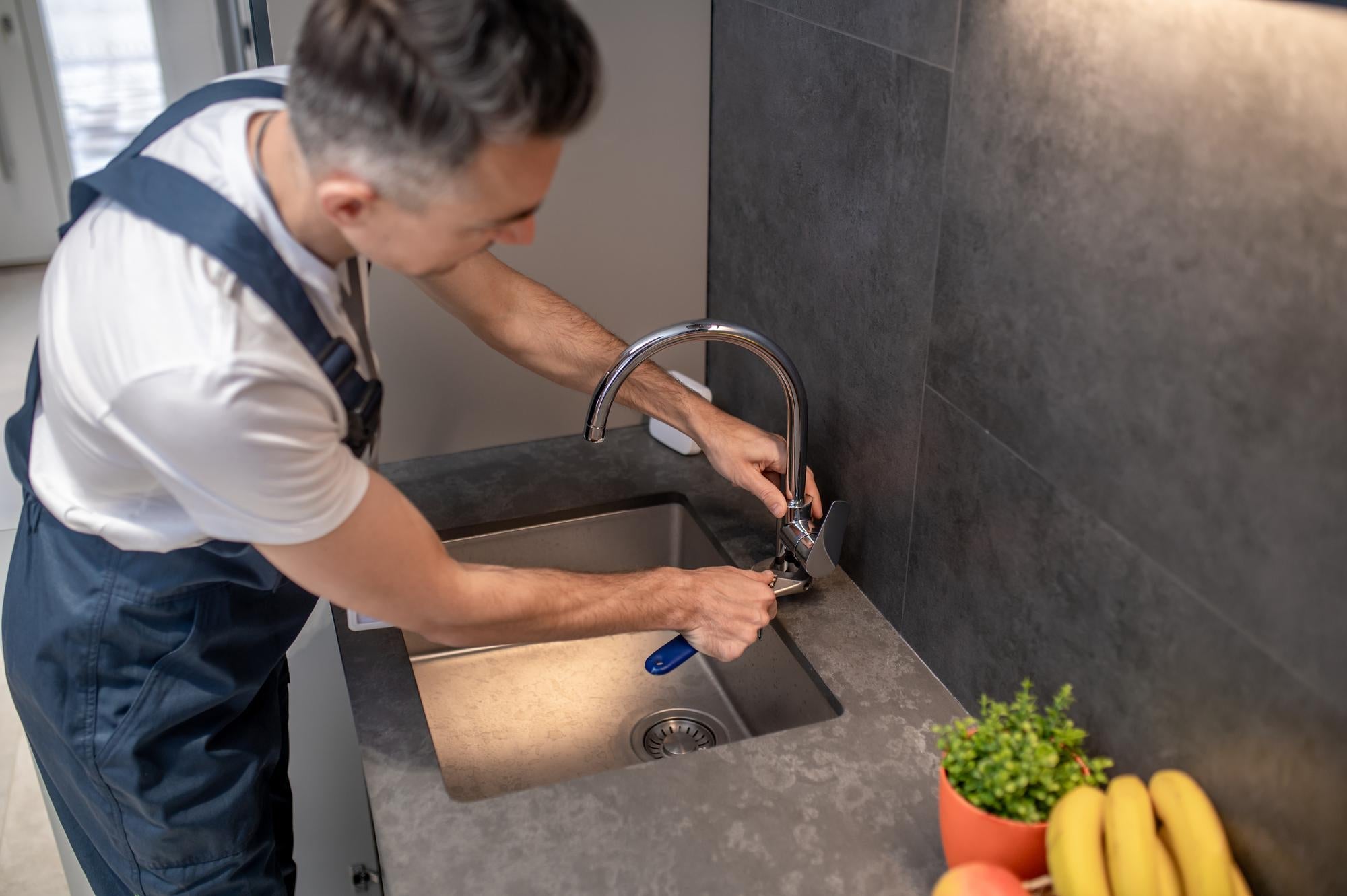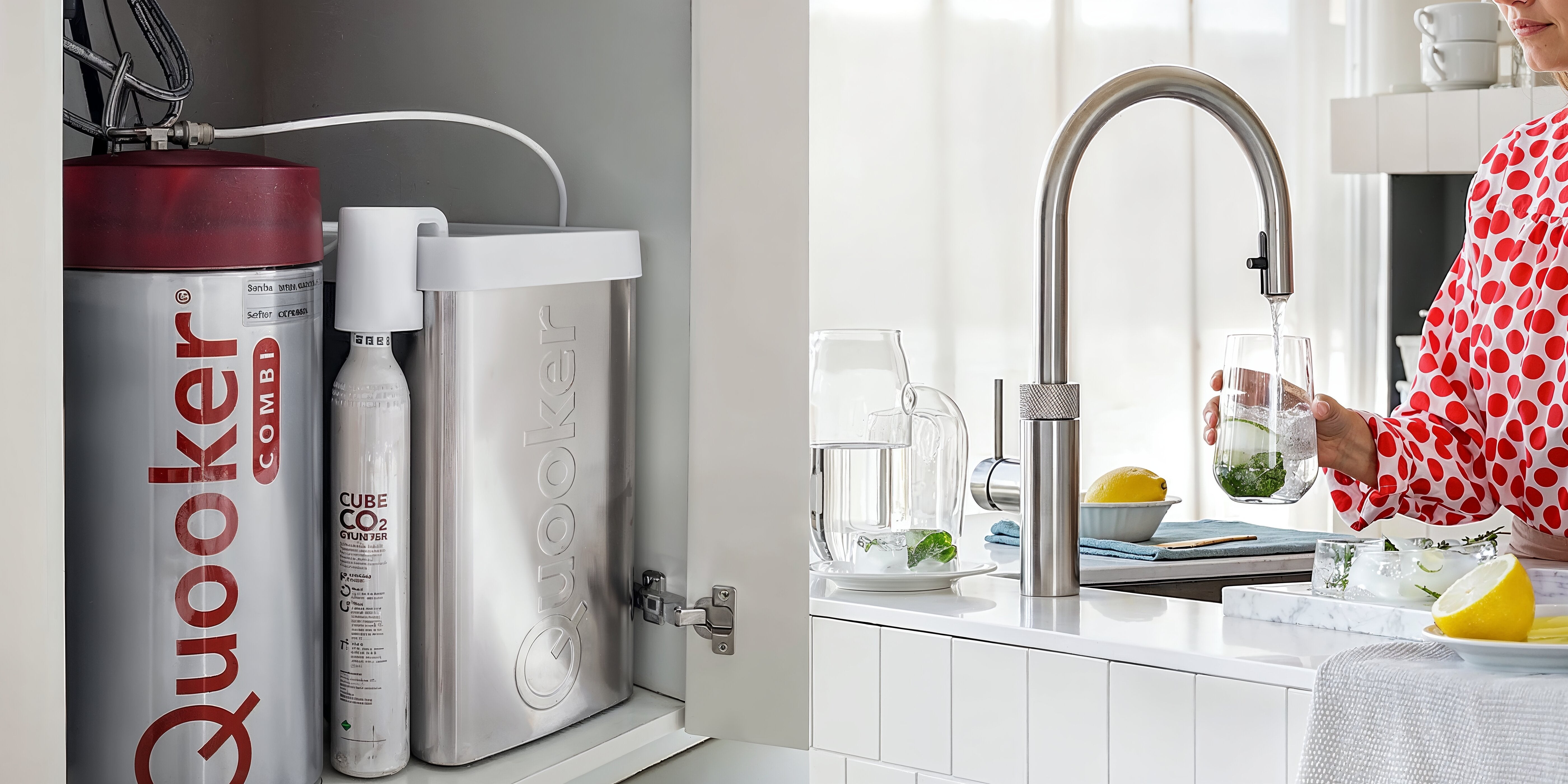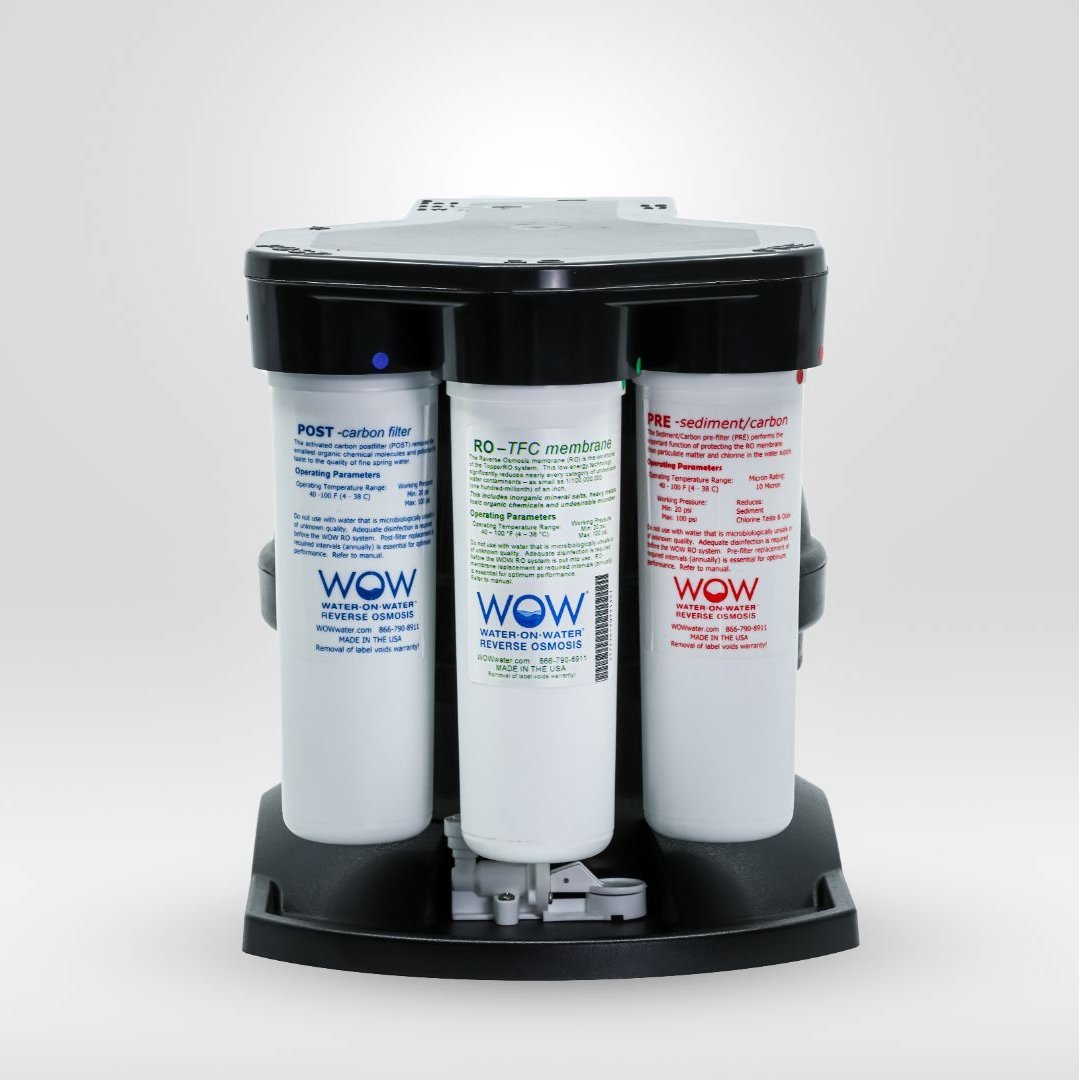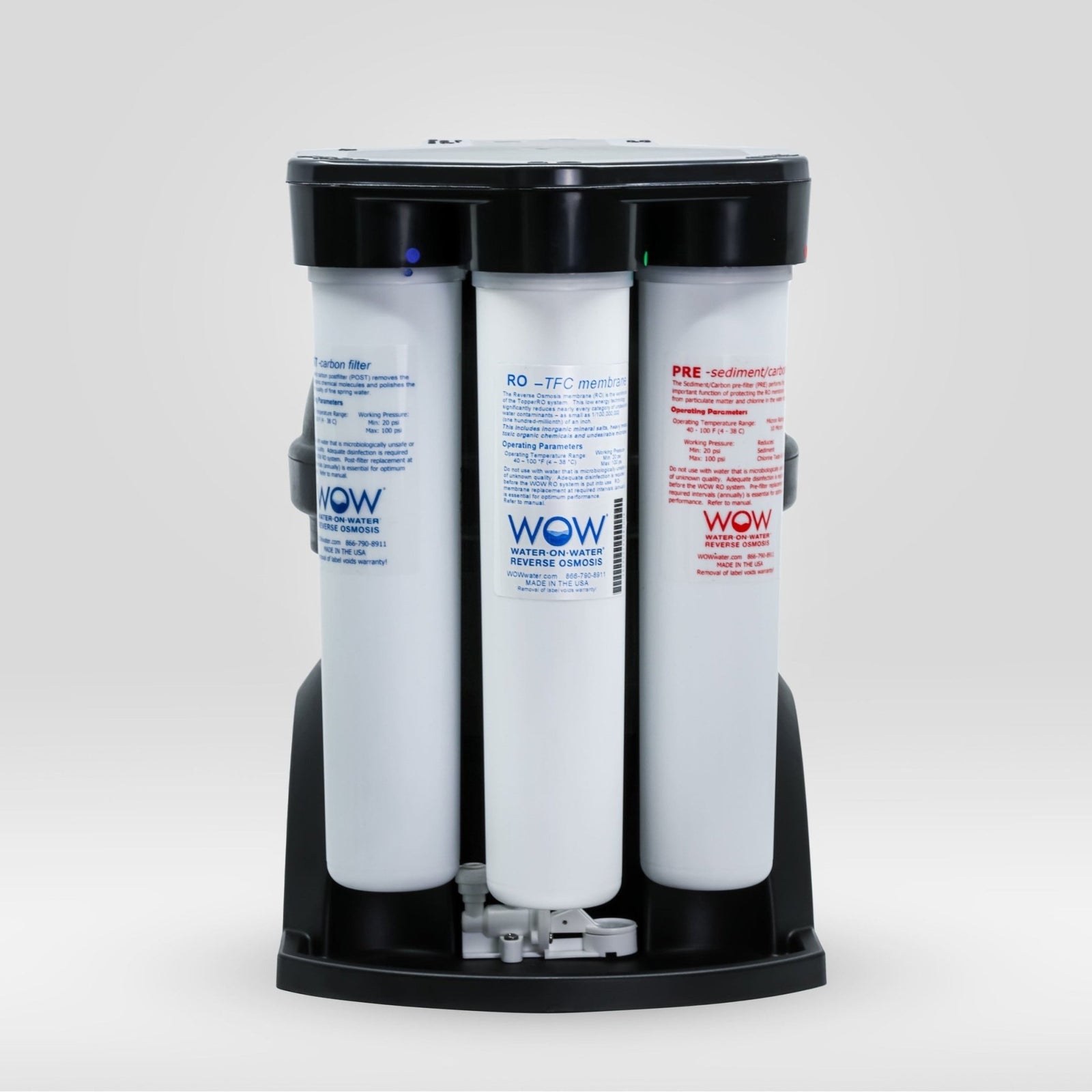For tiny house residents, a water purification system is certainly possible and often an excellent solution. Compact water purifiers are perfectly suited to the limited space in this type of housing. Various systems are available that take up little space while still providing high-quality drinking water. Costs vary, but the investment often pays for itself through savings on bottled water. Moreover, water purification aligns perfectly with the sustainable philosophy that many tiny house residents pursue.
Which types of water purifiers are suitable for tiny houses?
In the compact living environment of a tiny house, choosing the right water purification system is essential. Several options are available that perfectly suit this living style without sacrificing valuable space.
Under-sink filters are a popular choice for tiny houses. These systems are mounted directly under the sink and take up minimal space. Our "The Source" system uses reverse osmosis technology and removes up to 99% of unwanted substances from tap water, without requiring electricity. This makes it particularly suitable for sustainable tiny houses that sometimes operate off-grid.
Portable water purification systems offer flexibility for tiny house residents who frequently change locations. These compact filters are easy to install and take with you when needed. They are ideal for temporary solutions or as a supplement to a permanent system.
Integrated solutions are specifically designed to fit seamlessly into small spaces. At PureAqua, we offer systems that can be fully integrated into the design of a tiny house, making them virtually invisible while still delivering optimal water quality.
How much space does a water purifier take up in a tiny house?
Saving space is one of the most important considerations for tiny house residents when purchasing a water purification system. Modern water purifiers are surprisingly compact.
Most under-counter systems, like our reverse osmosis filters, only take up about 30 by 45 centimeters, with a height of around 40 centimeters. This means they fit perfectly in a small kitchen cabinet or in a specially designed niche in your tiny house.
For even more efficient use of space, you can choose to wall-mount certain components. For example, mounting the reservoir to the wall frees up space under the counter for other essential items.
- Use the vertical space in cabinets to place filter components
- Consider a compact reservoir system or a reservoir-less system
- Choose an integrated faucet that does not take up extra space on the countertop
For tiny houses with very limited space, special ultra-compact systems are available that take up to 40% less space than traditional filters, without compromising on purification quality.
What are the costs of a water purifier for a tiny house?
The investment in a water purification system for your tiny house varies depending on the type and functionality. A high-quality system like "The Source" with reverse osmosis technology costs between €699 and €1297, depending on the package and associated options, such as the type of faucet.
Maintenance costs are relatively low and consist mainly of periodically replacing filters. This typically costs between €50 and €150 per year, depending on the type of system and the water quality in your area. Systems that don't use electricity , such as our powerless solutions, save significantly on energy costs in the long run.
When you compare the cost with purchasing bottled water, the savings are significant. An average household that uses bottled water daily spends around €300 to €500 annually. A water purifier therefore pays for itself within a few years, while simultaneously contributing to less plastic waste.
| System type | Purchase costs | Annual maintenance |
|---|---|---|
| Basic under-counter filter | €699 | €50-€75 |
| Advanced RO system | €997-€1297 | €75-€150 |
| Portable system | €300-€500 | €40-€60 |
For tiny house residents who prioritize sustainability, a water filter system is not only a practical choice for clean drinking water, but also an investment that perfectly complements an environmentally conscious lifestyle by drastically reducing plastic waste and water consumption.

